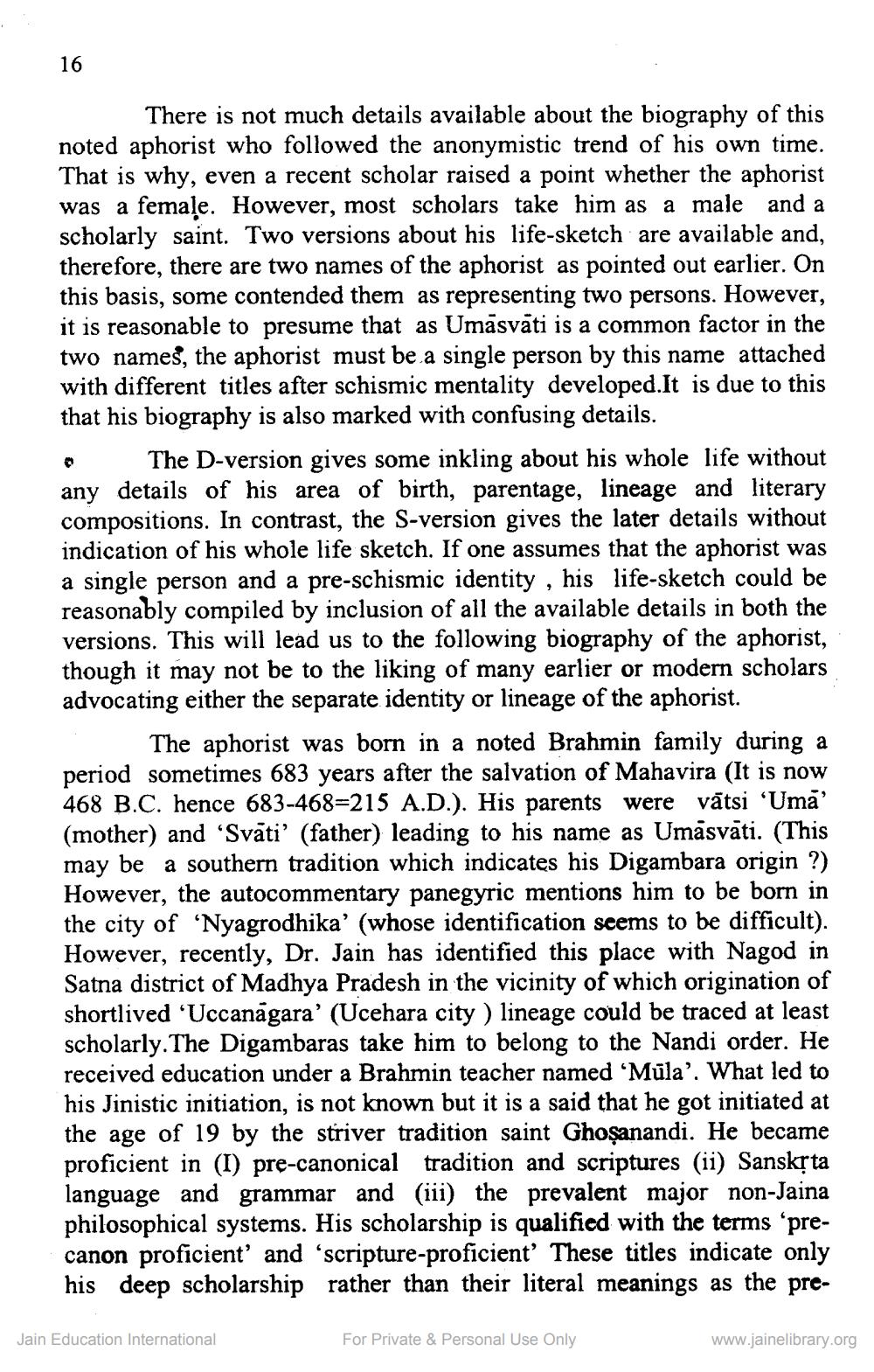________________
16
There is not much details available about the biography of this noted aphorist who followed the anonymistic trend of his own time. That is why, even a recent scholar raised a point whether the aphorist was a female. However, most scholars take him as a male and a scholarly saint. Two versions about his life-sketch are available and, therefore, there are two names of the aphorist as pointed out earlier. On this basis, some contended them as representing two persons. However, it is reasonable to presume that as Umāsvāti is a common factor in the two names, the aphorist must be a single person by this name attached with different titles after schismic mentality developed. It is due to this that his biography is also marked with confusing details.
The D-version gives some inkling about his whole life without any details of his area of birth, parentage, lineage and literary compositions. In contrast, the S-version gives the later details without indication of his whole life sketch. If one assumes that the aphorist was a single person and a pre-schismic identity , his life-sketch could be reasonably compiled by inclusion of all the available details in both the versions. This will lead us to the following biography of the aphorist, though it may not be to the liking of many earlier or modern scholars advocating either the separate identity or lineage of the aphorist.
The aphorist was born in a noted Brahmin family during a period sometimes 683 years after the salvation of Mahavira (It is now 468 B.C. hence 683-468=215 A.D.). His parents were vātsi 'Uma' (mother) and 'Svāti’ (father) leading to his name as Umāsvāti. (This may be a southern tradition which indicates his Digambara origin ?) However, the autocommentary panegyric mentions him to be born in the city of ‘Nyagrodhika' (whose identification seems to be difficult). However, recently, Dr. Jain has identified this place with Nagod in Satna district of Madhya Pradesh in the vicinity of which origination of shortlived 'Uccanagara' (Ucehara city ) lineage could be traced at least scholarly.The Digambaras take him to belong to the Nandi order. He received education under a Brahmin teacher named 'Mula’. What led to his Jinistic initiation, is not known but it is a said that he got initiated at the age of 19 by the striver tradition saint Ghoşanandi. He became proficient in (I) pre-canonical tradition and scriptures (ii) Sansksta language and grammar and (iii) the prevalent major non-Jaina philosophical systems. His scholarship is qualified with the terms 'precanon proficient and 'scripture-proficient' These titles indicate only his deep scholarship rather than their literal meanings as the pre
Jain Education International
For Private & Personal Use Only
www.jainelibrary.org




